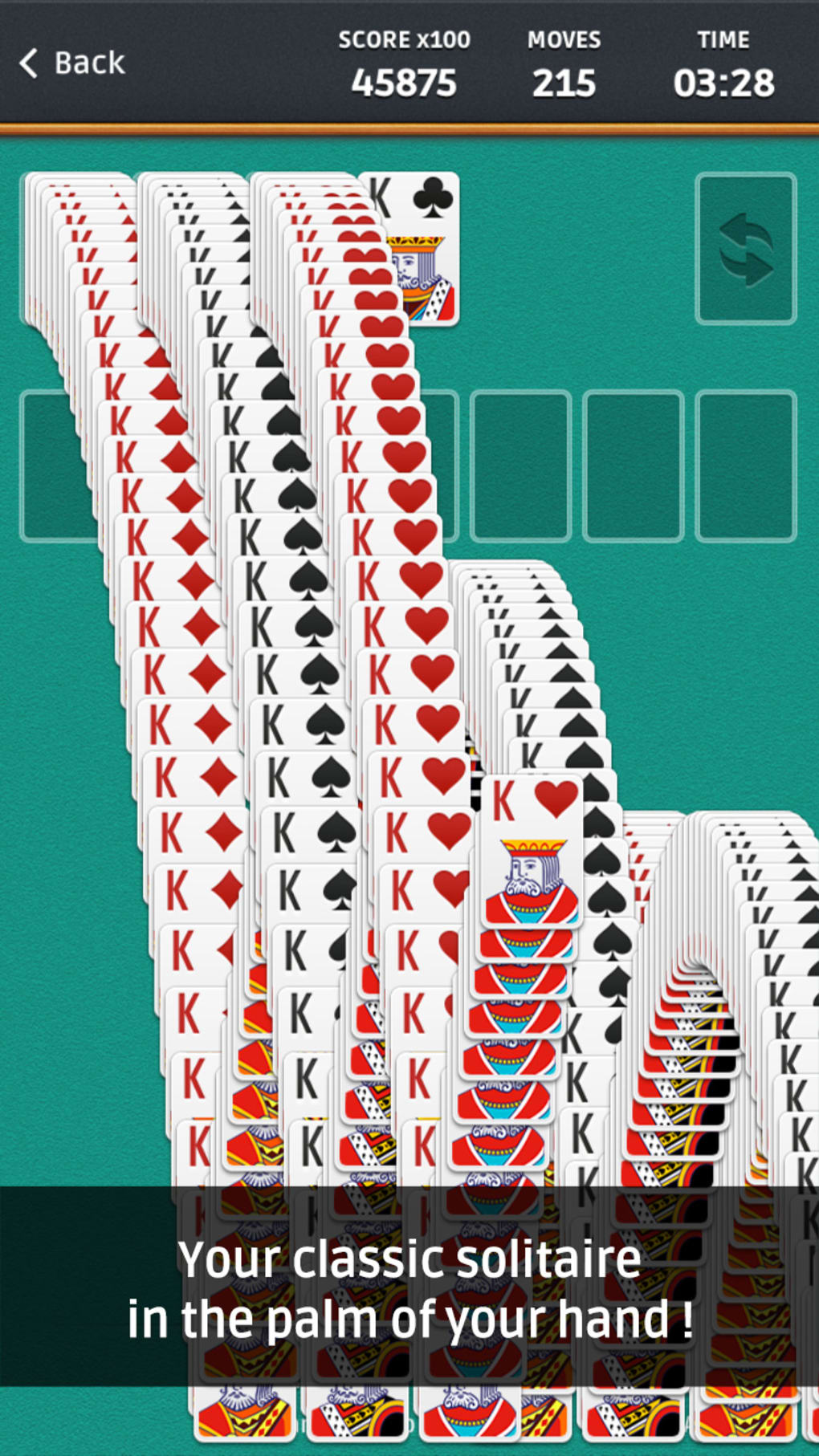Play Spider Solitaire and all your favorite Solitaire card games for FREE at Card Game Spider Solitaire.com!
Spider Solitaire is similar to other types of solitaire (klondike, patience, etc.). The goal of the game is to create 8 stacks of cards (king-through-ace). If all 10 foundations have at least one card, you may place additional cards by clicking on the 'stock cards' in the bottom-right corner of the screen.
Dept 56 Patience Brewster 10 Greeting Cards Bunny Rabbit Made In USA NEW. PATIENCE BREWSTER KRINKLES CHRISTMAS SNOW HEART QUEEN MINI CHRISTMAS STOCKING 9' $34.95. Play Patience Solitaire by making stacks of cards, stacks will cascade towards the bottom of the solitaire board and are to be comprised of red, black, red, black, red, black cards. Players of Patience Solitaire can click on their reserve cards at the top left hand of the solitaire board for more card options.
Spider Solitaire comes in a number of different card games. 1 Suit Spider Solitaire (as the name implies) is played with only one suit (Spades). Unlike traditional (or Klondike) solitaire, however, you may place any cards of the same suit on top of one another. Just make sure that your cards are in ascending order!
- Place cards of same suit in ascending order in the tableau
- Create stacks of cards (from King to Ace) to remove them from the screen
- Beat Spider Solitaire when all card stacks have been removed
- Click the 'stock card' (bottom right corner) to add more cards to the screen
- Earn up to 3 stars on Spider Solitaire by completing the game as quickly as possible
- See if you can earn 3 stars on every Spider Solitaire game on this site!
DISCLAIMER: The games on this website are using PLAY (fake) money. No payouts will be awarded, there are no 'winnings', as all games represented by 247 Games LLC are free to play. Play strictly for fun.
Playing cards have been a part of history as far back at 10th century China, and in the 1800’s they became a favorite pastime. With a standard 52-card deck you can play hundreds of different games, some that only require one player. The Patience Card Game is one of those games.
Called “Solitaire” in the US, Patience a card game that combines skill and creativity with its namesake, making it an intriguing option. Some historians believe that notable figures like Napoleon played the game, and today there are over 250 different known variations.
Here we’ll give you a rundown on how to play the card game Patience. This how-to guide features information on the traditional method, as well and two other options based on the card game patience. How to play, the rules and a few tips and tricks are covered, giving you everything you need to get started, other than a deck of cards.
Card Games: Patience – How to Play
In order to play, you’re going to first need to understand the basics.
Getting Started
To play the traditional version of Patience, you’ll need a standard deck of 52 playing cards and a flat surface. You’ll use all the cards, but not the Jokers in the game.
The objective is to position your cards in your foundations by sequence, in suit from low to high, or Ace to the king. To win the game, you’ll need to use every card in the deck and arrange them in this order.
Here’s how to do it.
Terms and Dealing Your Deck
Patience has a few terms that you won’t find in other card games. Here we’ll give you the definitions and instructions on how to set up the game.
1. The Tableau
One of seven piles that make up the main table, the Tableau is your main playing field in Patience. To deal your Tableau, begin from left to right and deal one card face up and then six cards face down in a horizontal line.

Then, go back to the left and deal one card face up on the second pile, followed by one card face down on each of the remaining piles. Next, return to the left and on the third pile deal one card face up, and then cards face down on the rest of the piles. Continue this process until your last pile has a face-up card with six face-down cards beneath it.
2. The Foundations
There are four foundation piles where you can build your suit sequence. In traditional Patience, the four aces are the foundation base, and the piles are created by suit and broken up into hearts, diamonds, spades, and clubs.
3. The Stock Pile
Sometimes called the hand pile, this is where your remaining cards stay after you’ve dealt your Tableau. You’ll use these as you go when needed, so place them in a pile above your Tableau.
4. The Talon
Commonly referred to as the waste pile, the Talon is where you put cards that you have no place for on the foundation piles or in the tableau.
How to Play
First, deal your tableau and then start by moving cards into sequential order piles to create new opportunities. If you relocate cards to another row, you can flip over one card from underneath to see if you can use it to build a pile or add to a sequence.
Keep an eye out for Aces in the deck and move them to the foundation piles when they’re uncovered. Use these foundation piles to place your cards by suit and sequence from Ace to King as you reveal them.
Once you’ve run out of opportunities in your tableau, you can draw from the stock pile. Flip over the card and place it appropriately in the tableau or foundations. If there is no place for this card, or another card during gameplay to go, put it in the waste pile.
If you free up a stack in your tableau, you can fill the space with a King. This strategic move could unblock a facedown card and help you to beat the game.
Continue playing until there are no possible moves left or until you build your cards into suited sequences in the foundation pile and win.
Card Game: Clock Patience – How to Play
The card game Clock Patience is a lot like the original, but with a few fun differences that make it more of a game of chance and less of a game of skill. Sometimes called Four of a Kind, Hidden Cards, Sundial, and Travelers, the deck is dealt in Clock Patience to resemble a clock face and uses 13 piles of four cards each.
The goal is to complete all of the four-of-a-kind sets before the last King is revealed.
Here’s how to play.
Dealing
Shuffle the deck and then deal the cards into 13 face-down piles of four cards each. Arrange the piles to mimic the numbers on a dial or clock, with 12 forming a circle and the final pile placed at the center.
Rules
Each pile on the dial corresponds to its respective number on the clock, and the pile in the middle is number 13. Begin by turning the top card in pile 13 face up, and place it under the stack that corresponds to that card number. For example, if you turn over a four of hearts, slide that card, face up, in the four spot under the four pile. Jacks go under the 11 pile, Queens under 12, and Kings under 13.
Once you’ve placed your card, face up, under the pile, then turn the card on top of that same pile face up and place it appropriately.
Continue this pattern until the game ends. You win if all 13 of the piles become face-up piles of four of a kind.
The one caveat is that the game is over if four Kings are face up before the entire dial is completed. Because of this rule, Clock Solitaire is almost impossible to beat, and you can expect to win only around one percent of the time.
Chinese Patience Card Game – How to Play
Another version, Chinese Patience, is like a cross between Klondike and Scorpion and brings the best of both varieties to the table. This option utilizes skill and critical thinking and is one that can be won.
Dealing
To set up this game, you’ll deal forty-nine cards to your tableau. Arranged as seven stacks of seven cards each, this is a different set up than traditional Patience. The stacks should be organized as follows:
/klondike-solitaire-card-game-rules-412473_FINAL-0781f37b4ef44a08b427c434d57d646b.png)
- First three stacks each have seven cards all dealt face-up
- Fourth stack deal three cards face-down and four face-up
- Fifth stack deal four cards face down and three face-up
- Sixth stack deal five cards face-down and two face-up
- Seventh stack deal six cards face-down and one face-up
Patience Card Game


You should have three remaining cards to set aside in your stock pile.
From here, the game plays just like traditional Patience. To win, you need to arrange the cards in the four foundation suits from Ace to King. As with the original Patience rules, you can place cards in alternating colors and descending ranks either singly or in a stack. You can draw from the stock pile should you need to, and kings may be moved into empty spaces when available.
Patience Strategy Tips
3 Card Patience Solitaire
While some versions of Patience rely on the luck of the draw, some require skill to have a chance to win. Here are a few tips to beat the game.
- Get face down cards turned over as quickly as possible. Given the choice between drawing from the stock or waste or uncovering an unknown card, it’s more beneficial to know what’s on the tableau.
- Wait to use your stock cards until there are no options remaining in your tableau. Bonus points if you have an open space and a strategy to place them where they do the least damage possible.
- Build your foundations in synch with another opposing suit. For example, if you build your stacks and foundations relatively evenly between diamonds and spades, it’s unlikely you’ll need a card that you can no longer access.
- Create space for your Kings as soon as possible. One key to beating the game is to have a place for your King to go when it’s uncovered. Focus on consolidating the cards in your tableau to give you room to work and maneuver when the time comes.
- Have patience. Like the namesake of the game, you’ll need to take your time and think through each strategy and move before you make it. Explore your options first to ensure you uncover as many cards as possible.
Patience Cards Online
In addition to these three versions, there are hundreds of other styles of Patience you can try. To explore more, try downloading an app or checking online for rules to different ways to entertain yourself with nothing more than a deck of cards.